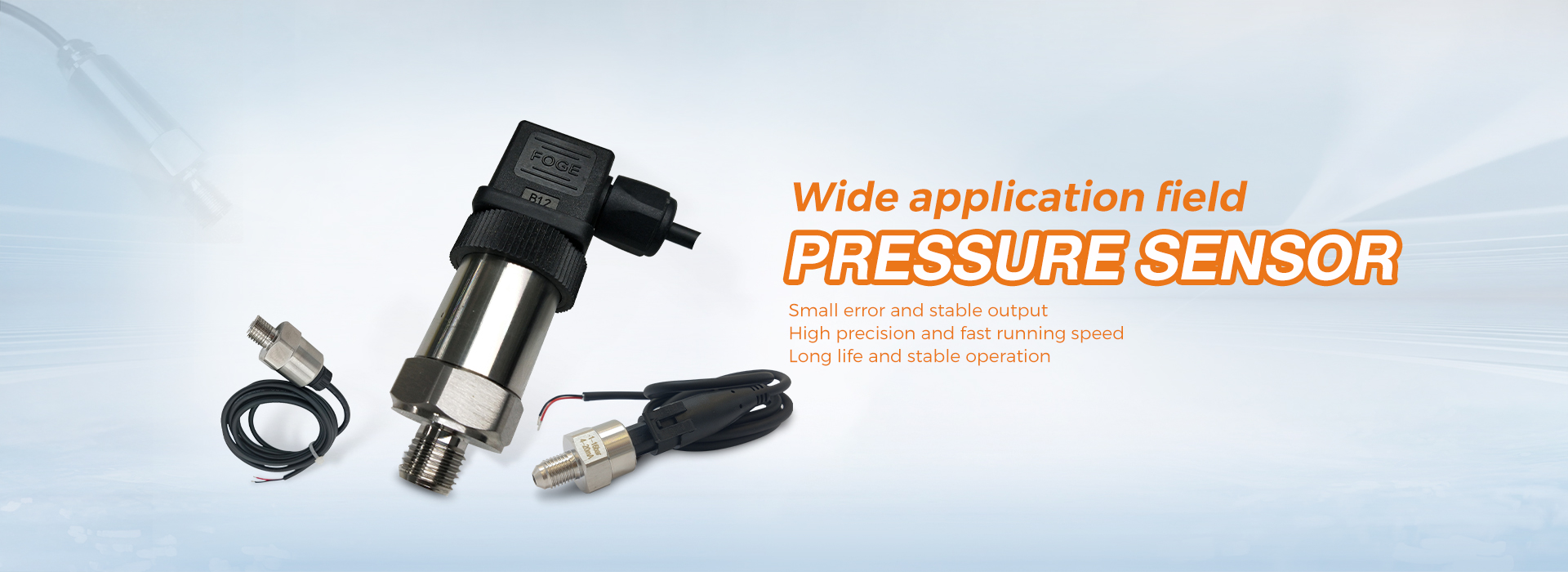Water pressure sensor is a kind of pressure sensor commonly used in industrial practice. It is widely used in various industrial automation environments, water conservancy and hydropower engineering, transportation and construction equipment, production automation systems, aerospace technology, ship technology, transportation pipelines and other areas.
The water pressure sensor is a detection device that can sense the measured information, and can transform the sensed information into electrical signals or other required forms of information output according to certain rules to meet the transmission and processing of information. , storage, display, recording and control requirements. It is the first link to realize automatic detection and control.
How the water pressure sensor works:
The core of the water pressure sensor is usually made of diffused silicon. The working principle is that the pressure of the measured water pressure directly acts on the diaphragm of the sensor, causing the diaphragm to produce a micro-displacement proportional to the water pressure, so that the resistance value of the sensor changes, and Electronic circuits are used to detect this change and convert and output a standard measurement signal corresponding to the pressure.
The static characteristic of the sensor refers to the relationship between the output of the sensor and the input of the static input signal. Because the input and output are independent of time at this time, the relationship between them, that is, the static characteristics of the sensor, can be an algebraic equation without time variables, or the input is used as the abscissa, and the corresponding output is The characteristic curve drawn by the ordinate is described. The main parameters that characterize the static characteristics of the sensor are: linearity, sensitivity, hysteresis, repeatability, drift, etc.
(1) Linearity: refers to the degree to which the actual relationship curve between the sensor output and the input deviates from the fitted straight line. Defined as the ratio of the maximum deviation value between the actual characteristic curve and the fitted straight line to the full-scale output value in the full-scale range
(2) Sensitivity: Sensitivity is an important indicator of the static characteristics of the sensor. It is defined as the ratio of the increment of the output quantity to the corresponding increment of the input quantity that caused the increment. Sensitivity is denoted by S.
(3) Hysteresis: The phenomenon that the input and output characteristic curves of the sensor do not overlap during the change of the input quantity from small to large (positive stroke) and the input quantity from large to small (reverse stroke) becomes hysteresis. For the input signal of the same size, the forward and reverse stroke output signals of the sensor are not equal in size, and this difference is called the hysteresis difference.
(4) Repeatability: Repeatability refers to the degree of inconsistency in the characteristic curve obtained when the input quantity of the sensor changes continuously for many times in the same direction over the full range.
(5) Drift: The drift of the sensor refers to the change of the sensor output with time under the condition of constant input, and the secondary phenomenon is called drift. There are two reasons for the drift: one is the structural parameters of the sensor itself; the other is the surrounding environment (such as temperature, humidity, etc.).
Dynamic characteristics
The so-called dynamic characteristics refer to the characteristics of the output of the sensor when the input changes. In practical work, the dynamic characteristics of the sensor are often represented by its response to some standard input signals. This is because the response of the sensor to the standard input signal is easy to obtain experimentally, and there is a certain relationship between its response to the standard input signal and its response to any input signal, and the latter can often be inferred by knowing the former. The most commonly used standard input signals are step signal and sinusoidal signal, so the dynamic characteristics of the sensor are also commonly expressed by step response and frequency response.
Post time: Nov-09-2022



